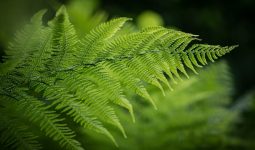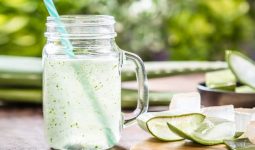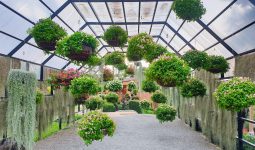Although there are different types of Bamboo all over the world, they are native to Asia and East Asia. Bamboo is resilient and proliferates.
However, because bamboo may become invasive if ignored, many people are reluctant to cultivate it in their gardens.
As we examine the different types of Bamboo, it’s essential to recognize that bamboo trees fall into two categories to solve these issues.
There are 91 genera and approximately 1000 species of bamboo.
This genus of tall grasses3, regarded as one of the fastest-growing and most adaptable plants in the world, frequently has joined woody stems.
Bamboo is Divided Into Two Categories
1. Running Bamboo
Rhizomes, underground stems that can generate new roots and plants, can spread up to 6 meters in various directions on running bamboo.
Rhizomes are shallow and frequently grow outward, which can be problematic for nearby vegetation. If they aren’t contained, they can spread over a vast region.
2. Bunching Bamboo
The opposite of flowing bamboo is clumping bamboo. This particular variety of bamboo has closely knit rhizomes.
They also emerge from the ground to form a cluster of culms (above-ground stems).
Different Types of Bamboo
Here, we’ve highlighted the most well-known and well-liked varieties and tried to show the different types of Bamboo plants in terms of size, color, and development patterns. Let’s go as we learn the different types of Bamboo in our blog post!
1. Tropical Black Bamboo
Tropical black bamboo is first on our list of different types of Bamboo. Up to 1500 different species and subspecies of grass make up the black bamboo subfamily. The tropical bamboo plant, known as tropical black bamboo, is indigenous to Java and Indonesia.
The name of the species is atroviolacea. Medium-sized tropical black bamboo grows between 8 and 12 meters tall. It has a substantial clump with walls as thick as 8 mm.
Dark green while young, culms eventually turn purplish-black as they mature. Loamy soil and clay loam are ideal for growing tropical black bamboo. Javans mostly utilize it to create furniture and a variety of musical instruments.
2. Japanese Arrow Bamboo
Pseudosasa japonica, often known as Japanese arrow bamboo, is also on our list of different types of Bamboo. It is a type of ornamental running bamboo native to Korea and Japan.
Furthermore, it is a non-invasive species. Because they used it to make arrow spears, Japanese samurai soldiers are credited with giving the bamboo tree its name. Today, however, we seldom use bamboo to make weapons; instead, we use it as a lovely ornamental plant.
Up to 20 feet tall, arrow bamboo can grow. Its most significant thickness is one inch, and its thin culms make it unsuited for construction. But it works well enough for little craft jobs. Arrow bamboo has big leaves up to 12 inches long and 1.5 inches wide. In both cold and warm climates, arrow bamboo flourishes.
3. Chinese Dwarf Bamboo
An indigenous bamboo clumping species from China is called Chinese Dwarf bamboo. The scientific name for it is Bambusa.
Because of its quick growth, horticulturists claim that Bambusa makes great hedge bamboo. Therefore, you should trim it twice yearly to keep it rounded and fluffy. However, you can also restrict its height by planting it in a small garden bed.
It has a 4 cm diameter and can grow up to 8 meters. Tropical and subtropical regions are best for it as a habitat. This particular variety of bamboo can also flourish in protected temperate areas away from harsh sunshine. Chinese dwarf plants are simple to grow because they require little upkeep. It can withstand droughts as well.
4. Burmese Bamboo
The tropical plant known as Burmese bamboo is indigenous to Bangladesh, China, Laos, Myanmar, and Thailand. Bambusa polymorph, different types of Bamboo can grow as tall as 25 meters and as wide as 15 centimeters.
Young culms are grayish-green, and their shoots are covered in dark brown hairs. Up to 17 cm long, its lance-shaped leaves. Subhumid climates are preferred by Burmese bamboo.
Loamy soil that drains well and is fertile is ideal for the plant. Burmese is distinctive due to its adaptability; people utilize it as raw materials for building, handicrafts, paper pulp, and board production. Moreover, it is a plant that may be eaten. It yields palatable, sweet-tasting shoots.
5. Wang Tsai
One of the different types of Bamboo with multicolored canes and deep-green foliage is Wang Tsai bamboo. It is about 1.5 meters broad and 3 meters high. It thrives in either full sun or some shade.
It can also endure in any soil. It requires a well-drained environment because it won’t grow excessively in wet or dry soil. Wang Tsai bamboo requires little upkeep and proliferates.
You only need to trim it occasionally to keep it fresh and manage its growth. This variety of bamboo is grown as a loose hedge, a privacy screen, and a background for smaller plants.
6. Giant Timber Bamboo
The next on our list of different types of Bamboo is Bambusa oldhamii. It is popularly known as giant timber bamboo and has thick foliage. This kind of bamboo is widely grown worldwide, including in the US.
The enormous bamboo is a 20-meter-tall plant with about 10 cm thick culms. The bamboo’s culm is thick, yet it’s also supple. Its non-invasive conduct is one of its additional qualities. The huge bamboo cannot thrive in a small, enclosed space. It does well in open, productive areas.
To maintain their rapid growth, fertilizers must be added to their food regularly. Southern China and the island of Taiwan are home to giant bamboo. Australia, California, Florida, Hawaii, Texas, and Puerto Rico, on the other hand, were introduced into their agricultural system.
7. Fernleaf Bamboo
Small leaves on thin canes make up the decorative tree known as fernleaf bamboo. Due to its modest and compact size, it is a great indoor plant option. Its leaves are green year-round, but in the spring, they become yellow.
It can reach a height of three meters. Additionally, numerous tiny stems with leaves on them sprout from their culms. Fernleaf bamboo is prized because it makes a superior deer-resistant hedge. It does poorly in a cold climate system since it requires sunlight for healthy growth. This is one of the different types of Bamboo native to China, just like other bamboo trees.
8. Alphonse Karr Bamboo
The Alphonse Karr bamboo has beautiful canes that are a brilliant golden-yellow tint. The golden-colored culms turn orange-red in direct sunshine.
The color develops into a dark golden yellow as it ages. The culms of bamboo are roughly 5 cm broad. This bamboo species is not invasive, and people grow it for its versatility and beauty.
It can endure practically any climatic situation. Approximately 8 meters tall when fully grown, bamboo plants have lush leaves that are 18 cm long. Alphonse Karr develops quickly and reaches adulthood after receiving regular care for 24 months.
9. Fish Pole Bamboo
This is the next on our list of different types of Bamboo. A running bamboo variety with compressed internodes is called fish pole bamboo. The bamboo plant has short internodes, which contribute to its modest height.
It does, however, give it thicker culms. The bamboo plant can grow up to 8 meters tall, and its culms are only 2.5 cm broad. Rich, well-drained soil and an open area are the greatest conditions for growth.
The Royal Horticultural Society’s Garden Merit Award was given to Phyllostachys for its exceptional features. Its vivid green culms are drought-resistant and cold-hardy.
Pole bamboo is an invasive species native to China and Japan but is also present in the US and Australia. They also utilize them to make handles for walking sticks and umbrellas.
10. Umbrella Bamboo
Umbrella bamboo is next on our list of different types of Bamboo. The bamboo plant fargesia murielae, often known as umbrella bamboo, has greenish-yellow canes.
It is a non-invasive species of bamboo that originated in China. The clumping bamboo may reach heights of 450 cm and a width of 150 cm, and it thrives in moist soils. Even though it can handle some sunshine, direct sunlight can harm the leaves.
Bamboo umbrella plants are extremely resistant to cold temperatures. Among the various bamboo species, an umbrella bamboo is an excellent option for urban gardens, hedges, and pond areas. At the end of the growing season, it doesn’t completely lose all of its leaves. Instead, it produces fresh leaves at the beginning of the following season.
11. Beechey Bamboo
Southern China is the original home of Beechey bamboo, also known as Bambusa beecheyana. It has a 100mm diameter and a height of 16 meters.
It is useful for construction projects due to its thick culms. Additionally, it has edible shoots that can be cooked into food, but they could taste a little bitter.
12. Buddha Belly Bamboo
Bambusa ventricosa is the scientific name for buddha belly bamboo. This variety of bamboo, which is evergreen, is native to China, Vietnam, and the Guangdong province.
It is now grown all over the world. The bulging internodes that Buddha belly bamboo is renowned for appearing when grown in challenging conditions. Some claim that it resembles Buddha’s chubby belly.
Because of its bloated clumps, the Buddha Belly is a good candidate for bonsai development. It can reach a height of 55 feet; however, when planted in a container, it only reaches a height of 8 feet. It can withstand harsh conditions and thrives in damp soil, swelling internodes of it
13. Guadua Bamboo
Out of all the available bamboo varieties, guadua bamboo is one of the most favored different types of Bamboo in America. Over 30 species make up the Neotropical genus Guadua Angustifolia, which belongs to the family of timber bamboo.
These different types of Bamboo are unique to Uruguay, Trinidad, and northern Mexico. However, the Amazon and Orinoco basins are where you’ll primarily find them in bamboo forests. They thrive in rich, moist soil and withstand temperatures between 17 and 26 °C.
We gain from guadua bamboo because of its exceptional underground root systems, which reduce carbon emissions and stop soil erosion. According to reports, bamboo buildings can withstand earthquakes without being destroyed.
14. Chilean Bamboo
Chusquea culeou is the scientific name for the clumping bamboo species known as Chilean bamboo. It comes from South America and spreads from the wet woods of Chile and Argentina to the Valdivian region.
This particular variety of bamboo can interfere with tree regrowth and govern various forest formations. In loamy, well-drained soil, Chilean bamboo can grow up to 8 meters. The majority of home plantings are done for hedging and ornamental purposes.
15. Giant Thorny Bamboo
Asia’s tropical and temperate regions are home to the Bambusa bamboo. However, they were incorporated into the cultures of other countries, including Central America, the West Indies, Java, Malaysia, Seychelles, and the Philippines.
It cannot live in cold climates and does best in tropical and subtropical regions. A spiny, clumping bamboo species, is giant thorny bamboo. It is fairly tall and has vibrant green colors.
Although it has a 35m maximum height, its culms, which have a maximum thickness of 5 cm, bend upward. To thatch roofs, people utilize thorny bamboo leaves. They can also be used to build ladders and bridges.
16. River Cane Bamboo
A type of Arundinaria bamboo plant is river cane. This variety of bamboo flourishes along riverbanks and streams.
In a pine forest, typically, Arundinaria gigantea prefers damp loamy soil. It helps prevent erosion because of its extensive roots. It also safeguards the environment by soaking up nitrogen fertilizer before reaching neighboring water bodies.
However, there is a danger that we will no longer enjoy the advantages of river cane bamboo due to extinction. The river cane population has significantly decreased due to overgrazing and industrial agriculture. This species of bamboo exhibits distinctive flowering patterns. Up to 40 years may pass before it blooms.
17. Japanese Timber Bamboo
The 20-meter-long Japanese timber bamboo, scientific name Phyllostachys bambusoides, is a variety of running bamboo. Its culms are around 10 cm thick, also known as Japanese cane bamboo.
You can infer from its name that it is indigenous to China and Japan. You will discover long, broad, green leaves around 17 cm long on its thick culms. It grows most effectively with some shade and lots of sunlight.
Japan is the country with the highest bamboo tree cultivation rates. 120 years pass between blooms for this plant. The massive bamboo tree is commonly referred to as a “madake” in Japan.
Because of its endurance, they employ it as a building material in construction. Additionally, they use it to create baskets, fans, food wraps, and shakuhachi flutes.
18. Painted Bamboo
Lastly, Bamboo trees, known as painted bamboo, are native to Asia and can flourish in tropical or subtropical conditions. A non-invasive species of bamboo called Bambusa vulgaris ‘vittata’ has beautiful lemon-yellow culms that are around 7 cm wide with sporadic green stripes.
It is a distinctive decorative plant thanks to its colorful culms. It may live in moist, well-drained soil. Additionally, it does well in both partial shade and direct sunlight.
The bamboo plant expands quickly and doesn’t require a lot of upkeep. It is around 15 meters tall and has an arching posture. Additionally, it bears 20 cm-long leaves, like most bamboo trees. And this comes last on our list of different types of Bamboo.
Conclusion
There is no way to overstate the advantages of bamboo trees for the environment. It beautifies our houses, gardens, and woods and safeguards the environment.
There are numerous other varieties of bamboo in addition to those listed here. We hope our blog helped you with the different types of Bamboo.








